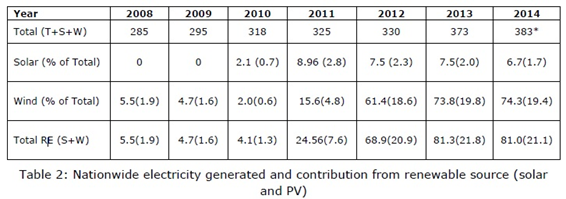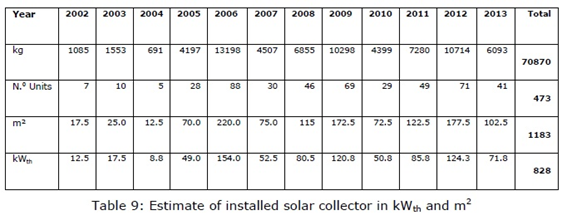The table 2 shows the production of electricity in GWh from 2008 to 2014 and the respective share of renewable sources, such as solar and wind. It stands out that in 2014, 383 GWhe of electricity were generated from 15 thermal power station, 5 wind farms and 2 PV parks. The contribution of renewable source in the generation of electricity was 21.1% or 81 GWhe. However, it must be said, that the goal to be 100% renewable in the generation of electricity by 2020 is an ambitious projection.

There is no data available with regard to installed capacity of solar collector expressed in m2 or kWth. Available Customs Authorities data are expressed in terms of weight (kg) and value of import (ECV), the latter being the cost of product and freight. Such information can be cross-checked with the information provided by major importers/resellers in terms of number of units imported.

Table 9 shows imports of solar water heaters from 2002 to 2013 expressed in kg. Knowing the type of system from the survey, i.e., thermo siphon or forced circulation, it is estimated that every thermo siphon unit of 200 litres has a gross area 2.5 m2 and weights 150 kg. It is believed that the data from Customs Office are accurate.
From this table it is calculated that the average yearly import is 69.0 kWth and taking into account that the life time of high quality tested solar system is 20 years, this shows that the total capacity installed as of today to be about 1380 kWth. This estimation includes thermo siphon, forced and direct systems.